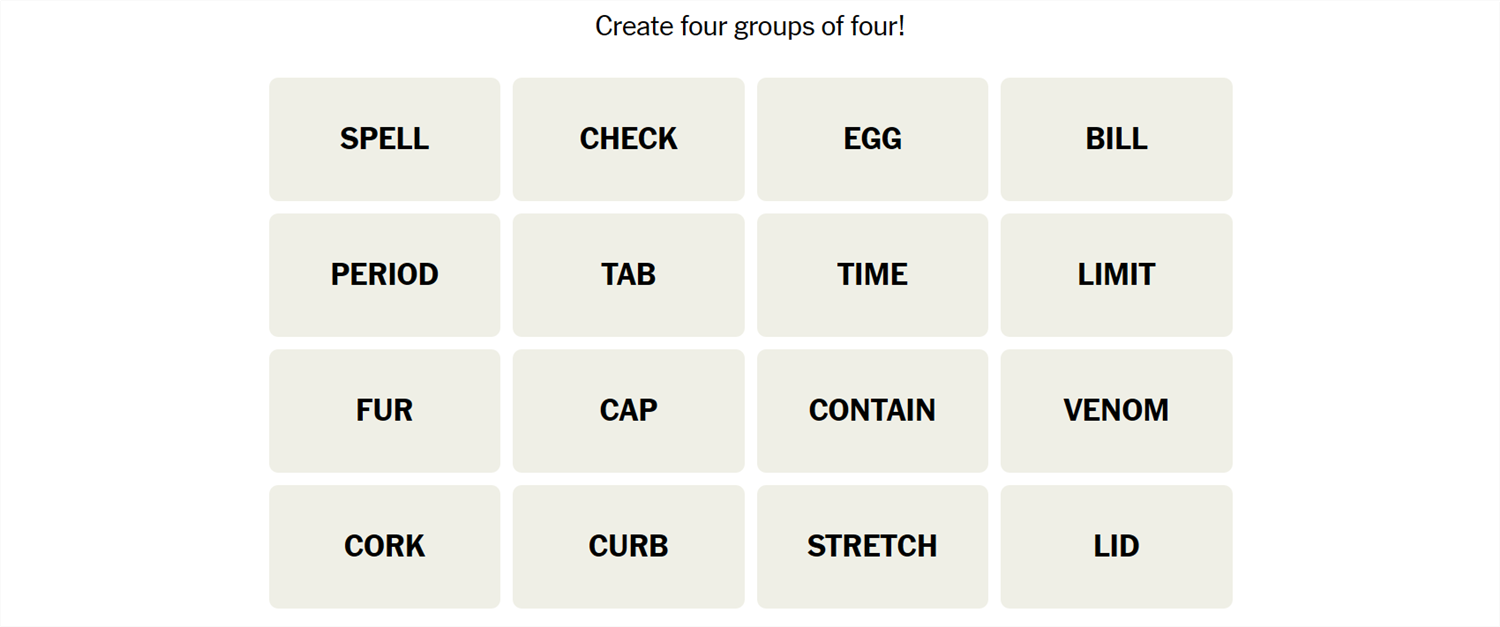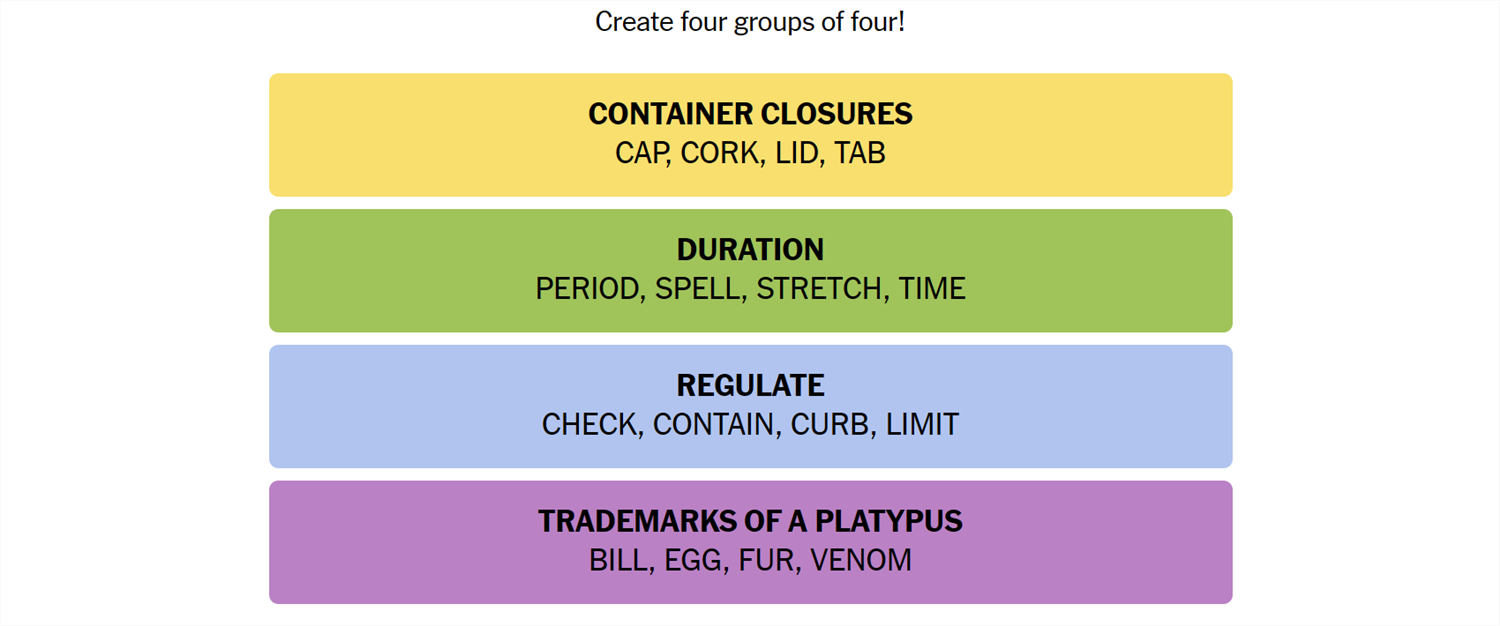Connections is a game from the New York Times that challenges you to find the association between words. It sounds easy, but it isn’t—Connections categories can be almost anything, and they’re usually quite specific. If you need a hand getting the answers, we’ve got you covered.
What Is Connections?
Connections is a game from the New York Times. The objective is simple: sort 16 words into groups of 4. Each group of words will be connected by some common idea or theme. That common element could be anything. We have seen everything from games that rely on the number of letters in the words to categories that require you to spot an extra letter at the end of the word. Sometimes they’re references to economics, other times they reference fairy tales. There is no telling what sort of association there will be between words.
Once you’re confident you understand the connection, select 4 words, then hit “Submit.” You have only four attempts in total, so don’t be too guess-happy.
Hints for Today’s Connections Groups
Here are a few hints for the 333rd Connections game to get you started:
- Yellow: Some twist off, some you open with your hand, others require a special tool.
- Green: How long does it last?
- Blue: Control
- Purple: Not a mammal, not a bird, not a reptile.
What Are Today’s Connections Groups?
If you still need help, the actual group names are:
- Yellow: Container Closures
- Green: Duration
- Blue: Regulate
- Purple: Trademarks of a Platypus
Today’s NYT Connections Answers
Container Closures (Yellow):
Cap, Cork, Lid, Tab
Duration (Green):
Period, Spell, Stretch, Time
Regulate (Blue):
Check, Contain, Curb, Limit
Trademarks of a Platypus (Purple):
Bill, Egg, Fur, Venom
How Did We Solve This Connections Game?
May 9th’s game wasn’t particularly difficult.
The first group I spotted was Purple. What do bill, egg, fur, and venom have in common? Taken together, they’re the unusual combination of traits that a platypus has. The group was properly named “Trademarks of a Platypus.”
Platypus venom is really quite interesting, as long as you’re not unfortunate enough to be on the receiving end. Though it isn’t known to be deadly to humans, platypus venom can cause excruciating pain for days that will often linger for weeks or months, and the pain is not alleviated by morphine or other painkillers. Don’t mess with the cute-fuzzy-duck animal.
The next group I spotted was Yellow, “Container Closures.” At first, I thought they were specifically related to alcohol. Beer typically has tabs or caps, and wine has corks. The only alcohol that typically comes with a lid is moonshine, since it is stereotypically stored in mason jars. The moonshine link seemed weak, but overall, the connection was too tempting to ignore. Luckily, my guess wasn’t too far off the mark.
With 8 words left, it was pretty easy to spot the remaining two groups.
Green was “Duration,” and contained the words period, spell, stretch, time. That wasn’t particularly difficult, though I was initially tempted to look for time-related words that referred to a specific duration.
Blue, the last group I spotted, was “Regulate.” The 4 words were check, contain, curb, and limit. It is actually a little surprising that it wasn’t the first group I spotted, given how straight forward it is.
How Do You Guess Connections Groups?
There is no quick, reliable way to approach Connections like there is with Wordle, since Connections isn’t algorithmic. However, there are a few things to keep in mind that can help.
- Look for similar parts of speech. Are some words verbs and others nouns? Are some adjectives? Try mentally grouping them based on those categories and see if any other patterns jump out at you.
- Are the words synonyms? Sometimes categories will just be synonyms for a phrase, or very close to synonyms. Don’t rely too closely on this, though. Occasionally, Connections will deliberately throw in words that are sometimes synonyms to mislead you.
- Try saying the words. Sometimes, saying the words helps. One puzzle we saw included the words go, rate, faster, clip, pace, speed, move, commute, and hurry—all of which are obviously related to the idea of motion. However, when you say them, it becomes a little more obvious that only four (go, move, hurry, faster) are things you’d actually say to prompt someone to get moving.
- Expect the red herring. Connections usually has words that could be plausibly, yet incorrectly, grouped together. Take the words Bud, Corona, and Light, as an example. You might instinctively see those three words together and assume they’re lumped together in a category related to beer—but they weren’t.
- Look for distinct words. If a word on your board doesn’t have multiple meanings or can really only be used in one context, try using that word as the basis for a category.
- Shuffle the board. Sometimes, moving words around will help you look at them in new ways.
If you didn’t solve this one, don’t feel too bad—there’s always tomorrow! And those words may align with a topic you’re interested in, giving you a leg up on the competition.






